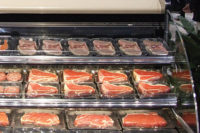“Our excellent working relationship with our UA partners and our common goal of growing the industry facilitated the negotiation process, resulting in an excellent agreement for both mechanical service contractors and the local UA unions,” said Stanley H. Berger, chairman, MSCA board of managers. “It focuses on the unique needs of the service industry.”
The agreement forms a framework for individual contractors and local UA jurisdictions to plug the national accord into specific localized situations. The new agreement takes effect Jan. 1, 2001, and runs through Aug. 1, 2005, with the current accord extending to Dec. 31, 2000.
The new agreement was rewritten and reorganized to “enhance understanding and clarify,” according to its founding fathers. “The agreement succinctly defines the scope of service operations.”
Among areas of attention:
The no-strike, no-lockout policy was also said to have been clarified.
MSCA has been hosting 4-hr regional seminars for a detailed review of the accord. Remaining seminars will be held Nov. 15 in Kansas City, KS; Nov. 30 in Los Angeles, CA; and Dec. 14 in Miami, FL.
Labor Shortage
In additional remarks to attendees at the Toronto conference, Berger said the biggest challenge facing the industry is “finding the manpower to sustain our workforce.“We must do a better job in portraying our trade to young people and touting the many benefits of entering our field. It’s a high-tech, challenging field of work with excellent benefits and can be extremely lucrative.”
He added, “Of course, we all know this. But we must be sure the rest of the world does.”
Among other items reported at the conference:
He said the program might also be used as part of service apprentice training programs through the UA training schools.
Said Berger, “The programs and publications we developed are the ones you told us you need and the ones that can best help you succeed.”
Publication date: 11/06/2000





